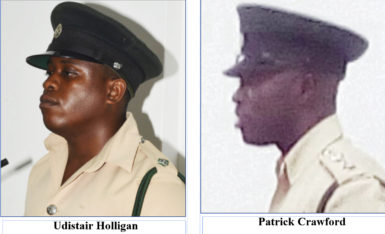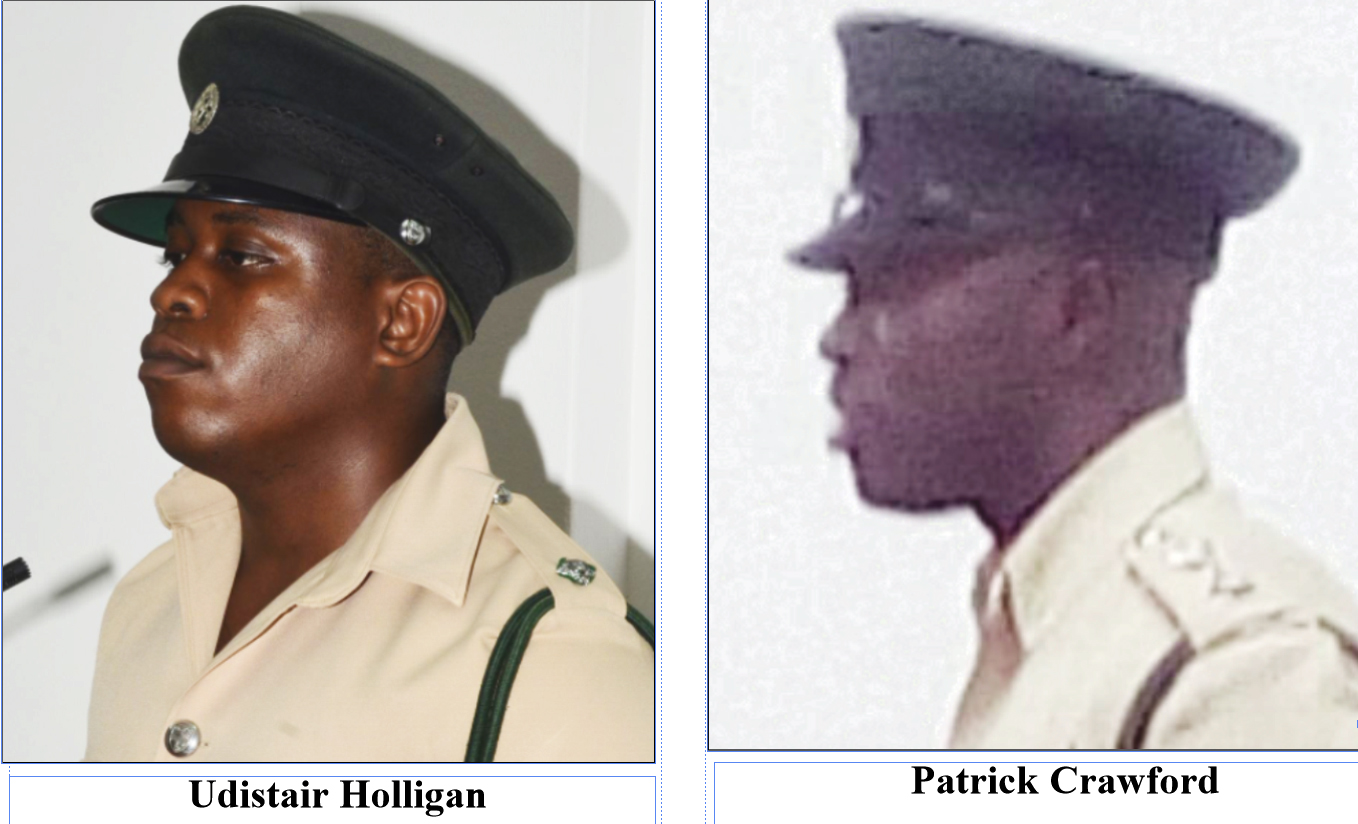According to Udistair Holligan, who was the Task Force Commander at the Georgetown Prison on March 3rd, the situation on the ground went from a controlled to an uncontrollable environment in a matter of 20 minutes after the takedown of one of the suspected ringleaders of the unrest.
Testifying yesterday before members of the Commission of Inquiry (CoI) into the fatal prison fire, which claimed 17 lives on that day, Holligan said the events have left him traumatised as even now he is still haunted by the sound of inmates screaming. Added to this, he is reminded of the threats he endured from the inmates, who seemed to blame him for the prison deaths although he said he did his best.
On the morning of March 3rd, Holligan, who is a Task Force Commander at the Timehri Prison, had been summoned to the Camp Street jail. During a briefing, which included Director of Prisons Carl Graham, Officer-in-Charge of the Georgetown Prison Kevin Pilgrim and ranks from several other prison facilities, he learnt that a search was to be conducted.

When they attempted to open the door, he said, it could not be opened, and appeared to be jammed from the inside. Michael Cozier, who works in the mechanic shop of the prison, was called to assist with a metal cutter, but on their way back, an inmate shouted, “Mr Holligan, y’all could open the door.” When they tried, the door opened easily.
The clearing of the dorm began, and according to him, prisoners were exiting voluntarily.
On the tarmac below, Chief Prison Officer of the Camp Street Prison Patrick Crawford had been put in charge of extracting the ringleaders. He was to wait on the directive of Pilgrim, who would identify the ringleaders to him as they came out, at which point Crawford and his task force members would orchestrate the “takedown.”
Crawford, testifying yesterday, said the takedowns were done quickly and professionally—no injury was caused to officer or inmate, although he said, there was some resistance from inmate Collis Collison, the second ringleader to be removed.
When Collison had testified, he had alleged that he was cuffed by an officer during the extraction and dragged to the front of the compound. He claimed too that he was rendered unconscious for a brief time when he was dropped to the ground.
Although the testimonies so far have suggested that this is the point where pandemonium broke out among the inmates, Holligan testified that an inmate, Shake McKenzie, after seeing the removal of the first alleged ringleader, had begun acting uncontrollably.
“After he saw that he started cursing and started to go on in an uncontrollable manner. He came outside to the mesh… then he stepped back in front my face and started to curse at me and went on in a manner as though he wanted to hit me or something. So I told him to step back. He did not comply so I then pushed him back into the dormitory and secured the door by holding it firm, after which, he still went on cursing and going on in an uncontrollable manner. But he went back into the dormitory and other inmates came forward to come out of the division,” he said.
Aggression
The prisoners once again began exiting, but McKenzie allegedly became violent again, and had armed himself. Holligan related that the other inmates began rushing the door, at which point an order was passed by Hudson to have the door locked. He said the prisoners then began pushing steel through the holes in the door and throwing urine and “chemicals laced with pepper.” Some urine got on his person, forcing him to retreat downstairs to change.
Holligan did not return to Capital A, but went to Capital B instead. He said he was met with the same aggression by the prisoners there, who threw stones at them. After some persuasion by Deputy Director of Prisons Gladwin Samuels, the inmates of that dorm began exiting. It was while directing them down the stairs that Holligan spotted a fire at the hole in the wall in the middle of the division. He said Samuels shouted for someone to get fire extinguishers.
Crawford recalled that when he went to Capital B, he saw that a mattress had been lit at the hole in the wall. That fire was put out, but that mattress was replaced with another, which was more difficult to extinguish because the fire had been lit on the side of the mattress facing away from him.
Under cross-examination by Commission Counsel Excellence Dazzell, he stated that in order for him to extinguish that fire, he would have had to place his hand through the hole and at that point, the prisoners were still throwing missiles, so that was not possible.
It was after the fire at the hole was thought to be under control that the officers recognised there was a fire in the A division.
Holligan said they attempted to have the inmates exit but again, they found that the door would not open. He said they shouted to the prisoners to remove what was blocking the door, assuming it was a recurrence of the situation before, but received no response.
Holligan stated that he heard when the order was passed for inmates to exit through the hole in Capital B. The door had been reopened by Crawford, who testified that he knocked on the grill with his baton so the inmates would know the exit was available.
Holligan recalled the officers retrieving fire extinguishers in an attempt to control the fire, and that Cozier came again to try cutting the door but to no avail.
In Crawford’s testimony, he stated that he, along with Cozier, attempted to break the wall at the side of the dorm using sledgehammers, and even tried opening the side door but it appeared to have been tampered with. During their efforts to open the door, he said, inmates poked at them with improvised weapons, and threw urine and faeces on them, causing them to arm themselves with shields. In response to an enquiry by Chairman of the Inquiry Justice James Patterson, he explained that the faeces were usually liquefied. He also stated that urine and pepper had been found in bottles during searches before.
After much effort, the main entrance door was eventually opened by Holligan and Officer Ron Lyken, who had bounced the door with a fire extinguisher and turned the key at the same time. This is according to Crawford, who also submitted that during his tries to get the door open by kicking it, the bottom of his shoes began to melt.
According to both witnesses, it was after the door was opened that inmates managed to break out of the old capital building.
Steve Bacchus, however, the inmate who prisoners professed was instrumental in their rescue, had testified that after he broke out of his dorm, he ran downstairs and informed Crawford that there were prisoners alive in the building.
He said Crawford then ran upstairs with a bunch of keys and tried to open the side door, but the keys did not work. Bacchus stated further that using buckets of water, the escaped prisoners tried cooling down the grill of the main door before attempting to wrench it open. He said they were there for about five to six minutes before an officer came up with a key and joined the efforts to get the door open. The door eventually gave way after the inmates continuously kicked the bottom.
Under cross-examination by Dazzell, Crawford said he was the one who told Bacchus there were prisoners alive in the dorm, and who sent him to inform the prisoners when the main door had been opened eventually. When asked by Dazzell the time span between when the fire was first spotted in Capital B and when the Fire Service arrived, Crawford stated that it had not been long, explaining that by the time he exited the division, they had already began setting up their equipment. It is unclear whether it was on his first or second visit there, as he had been the last to leave after re-opening the division door.






